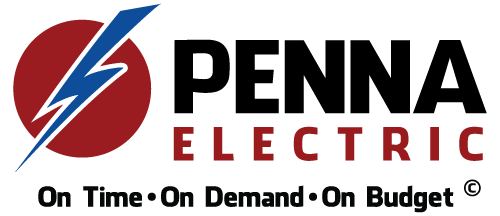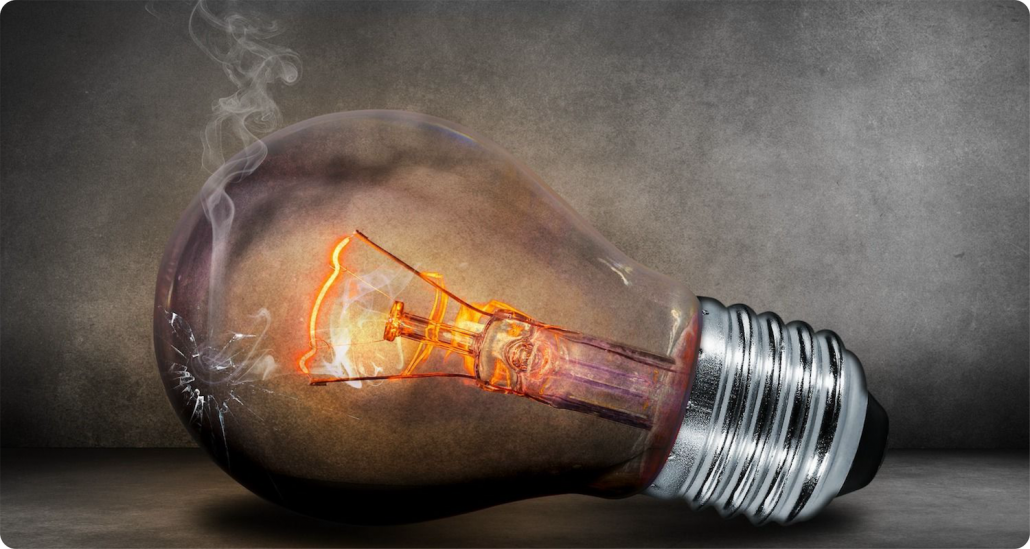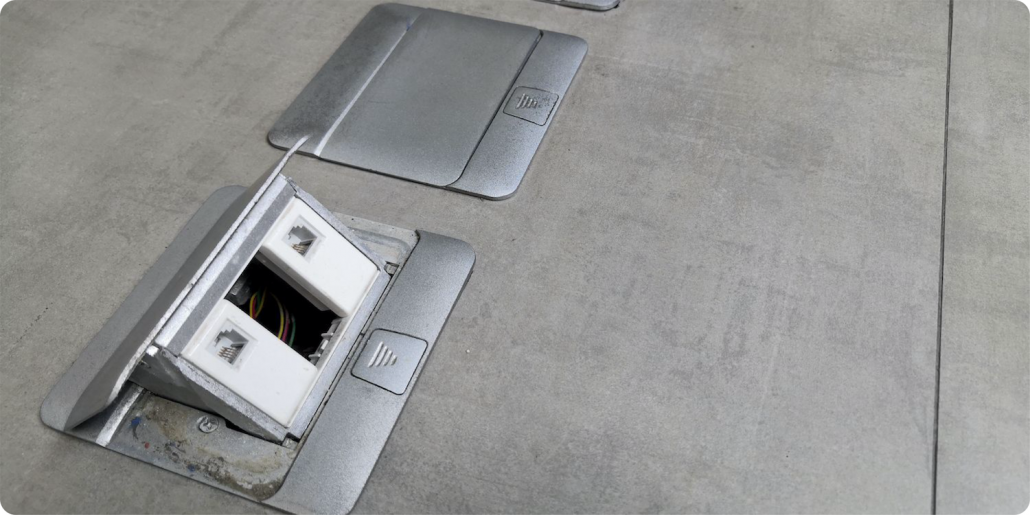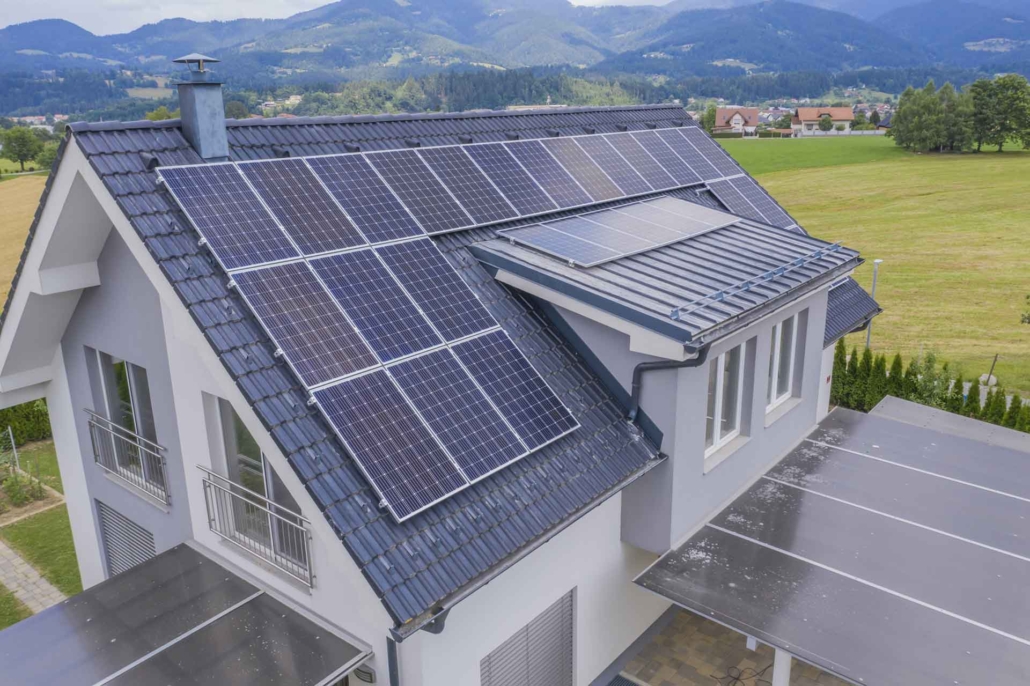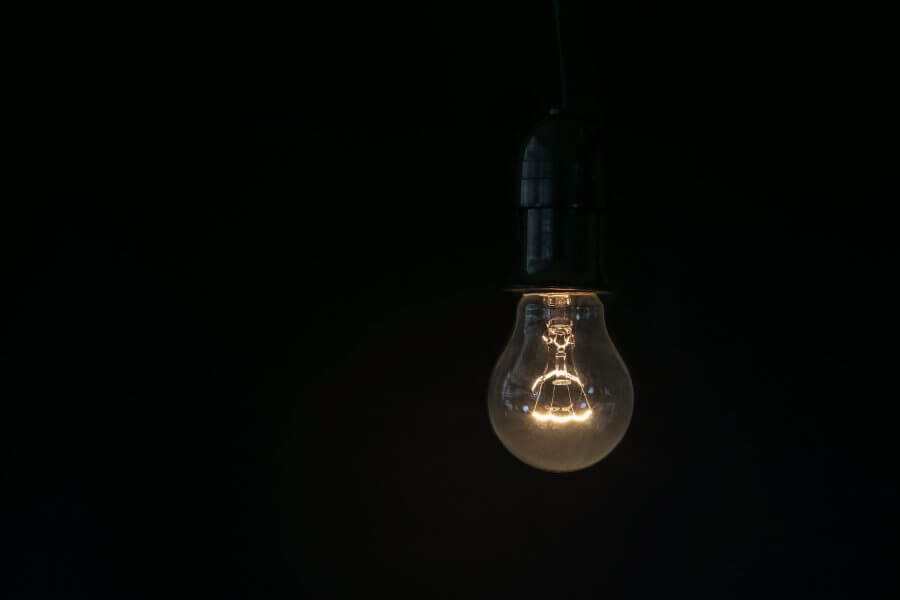June 20, 2019 | Cristina Dinulescu
Wall Mounted Outlets
Wall-mounted TVs are common in many homes today, which means unsightly cords drooping down the wall to the outlet. You can eliminate the need for such cords by installing a wall-mounted outlet that specifically caters to your TV.
Outlets Above Shelves and Tables
Entry outlets placed above shelves or tables make convenient charging points, ensuring you never leave home with an uncharged device.
Install a few extra outlets near the floor and eliminate the need for extension cords. You can even consider installing outlets directly in the floor, to further reduce tripping hazards.
If you walk into the average home, you’ll find outlets scattered around the room near the baseboards. Sure, they get the job done, but outlet installation in this way isn’t very convenient.
Why are outlets installed this way? Well, contractors will install outlets only where they need to in order to pass the safety inspection. Minimizing outlets also helps them save money. Outlets aren’t installed with the homeowner in mind, but you’re the one who’s going to be stuck with those outlets for years!
Having many strategically located outlets is important because it allows you to live life your way. Their placement doesn’t have to mess with the aesthetic beauty of your home either, and can even be considered to fit the many types of outlets installed.
Here are some of the best places to put outlets that will make living your life much more convenient.
1. Outlet Installation Above Shelves and Tables
Many people put their phones, laptops, and tablets on a shelf or table when they are at home. Why not charge those devices while they’re sitting there? Entry outlets placed above shelves or tables make convenient charging points, ensuring you never leave home with an uncharged device.
It also makes the entire process more convenient. You don’t need extra long charging cables that need to reach a distant outlet, you don’t have the tripping hazard anymore, and you also don’t need to bend over to reach the receptacle, or reach behind or under furniture.
2. Floor Outlets
Ever walk into a room and see wires crisscrossing the floor? These wires destroy the aesthetic appeal of the room, in addition to posing a tripping hazard. Floor outlets can solve this problem. Install a few extra outlets near the floor and eliminate the need for extension cords. You can even consider installing outlets directly in the floor, to further reduce tripping hazards.
The National Electrical Code has certain requirements when it comes to floor outlets. They need to be installed as part of an assembly, with a metal box, gasket seal, and special receptacle. They should also have a strong cover plate with a moisture-proof cover. It is not allowed to install a regular wall outlet in the floor, mainly because if you stepped on it, it would break.
3. Wall Mounted Outlets
Wall-mounted TVs are common in many homes today, which means unsightly cords drooping down the wall to the outlet. You can eliminate the need for such cords by installing a wall-mounted outlet that specifically caters to your TV. Your TV area will remain clean and uncluttered.
You can also use the conduit hidden in the wall to connect your TV to other electronic devices, like DVD players and gaming systems. Not only that, but smart TVs today are power-hungry devices, so having an outlet that caters to them specifically makes good sense. You would especially not want to use an extension cord with your very expensive TV.
4. Bathroom Outlet Installation
From electric razors to hair dryers and straighteners, you can find a lot of electronics in the bathroom. The trouble is, the bathroom can be humid and wet, so paying special attention to bathroom outlets is important.
It is not only convenient, but also safer to have specific outlets dedicated to each item. For example, you can have outlets installed on either side of your sink. This way, two people can safely use electric devices at the same time, as there will be no need for an extension cord.
5. Kitchen Outlet Installation
Homebuilders will always have outlets ready for large kitchen appliances, but sometimes smaller appliances are forgotten. Depending on what your kitchen layout is, you might want to consider installing outlets for small appliances on the kitchen counter. If you have a kitchen island that you regularly use for cooking, then you should consider installing outlets on the island as well.
You can have countertop outlets powering toasters, teapots, and blenders. You can also dedicate other strategically placed outlets to power laptops, phones, and TVs. Outlets can be installed on walls, under kitchen cabinets, and directly on the counter, depending on the placement that works best for you.
6. Outlets for Your Home Office
Computers and tablets and printers, oh my! Home offices sure do have a significant number of electronics! Add to that the fact that you might need to charge your phone or phones while working, and it becomes clear how much a home office depends on outlets.
These devices run simultaneously, which means extension cords and power strips are common. Not only are these cords inconvenient – they make an office look messy – but they can also be dangerous. Firstly, extension cords are a tripping hazard, and secondly they can damage your devices if they’re overloaded.
Instead, place outlets above the desk in your office to eliminate the mess of cords on the floor. Install as many outlets as you need to make sure that every electronic device in your office has its own dedicated outlet and you can avoid the power strips and extension cords altogether.
